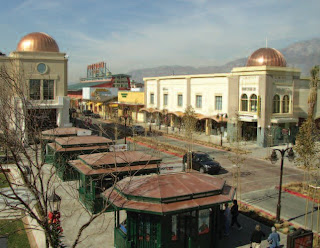
I'm having a bit of an off blog semantical debate with others on this site. Chris wrote a great series called debunking the growth myth but my views on growth are different.
I am in favor of growth in Windsor, and lots of it. I want to see the density of the core of Windsor grow 10 fold. I want to see tens of thousands of new residents in our core, growth of new development of mixed use residential, commercial and office space. I want to see growth in the amount, size and quality of public spaces and the links between them. I want to see growth in Windsor's live music and venue's to host them. I believe this type of growth is necessary in creating a sustainable Windsor.
What I don't want to see is sprawl, big box development because that is unsustainable growth that leads to unwalkable neighborhoods. Lets face it, there should be a simple rule that council and our planning advisory committee should not permit anything to be built that they themselves do not want to live next door to.
Heres some exerpts from an Urban Land Institute that debunks the growth myths making the case for the growth of higher density in the core
Myth #1 - Higher-density development overburdens public schools and otehr public services and requires more infrastructure support
Fact #1- The nature of who lives in higher-density housing-fewer families with children-puts less demand on schools and other public services than low-density housing. Moreover the compact nature of high density development requires less extensive infrastructure to support it.
Myth #2 - Higher-density developments lower property values in surrounding areas.
Fact #2 - No discernable difference exists in te appreciation of properties located near higher-density development and those that are not. Some research even shows that higher-density development can increase property values
Myth #3 - Higher density development creates more regional traffic congestion and parking problems than low-density
Fact #3 - Higher-density development generates less traffic than low-dnesity development per unit; it makes walking and public more feasible and creates opportunities for shared parking
Myth #4 - Higher-density development leads to higher crime rates
Fact #4 - The crime rates at higher-density develpoments are not significantly different from those at lower density developments.
Myth #5 - Higher density development is more environmentally destructive than lower-density development
Fact #5 - Low-density development increases air and water pollution and destroys natural areas by paving and urbanizing greater swaths of land
Myth #6 - Higher-density development is unattractive and does not fit in a low density community.
Fact #6 - Attractive, well-designed, and well-maintained higher-density development attracts good residents and tenants and fits into existing communities
Myth #7 - No one in suburban areas wants higher-density development
Fact #7 - Our population is changing and becoming increasingly diverse. Many of these households now prefer higher-density housing, even in suburban locations.
Myth #8 - Higher-density housing is only for lower income households.
Fact #8 - People of all income groups choose higher-density housing
Maybe this puts me semantically at odds with scaledown's name and purpose. What do you think?





3 comments:
I agree Mark, we need smart growth, not growth for growth's sake. Higher density, in-fill, brownfield redevelopment for example. What worries me is that our current thinking, planning practices and master plan don't reflect these strategies adequately.
As we add on to the medical school at the U, it pains me to think we're about to tear down Grace for a commercial development along University along with some single family housing units in behind. For a City looking to diversify, why can't we renovate Grace and turn it into a research and teaching facility. We already have a strong base in pharmaceuticals. I think this would also help with many of our doctor shortages. Instead of spending millions recruiting doctors, spend the millions creating the infrastructure to attract them. We have an attractive market in terms of housing and other amenities.
I think posts like yours and Chris's are necessary to spark debate and discussion. To succeed in the future, we have to begin to look at things differently.
Unfortunately, some aspects of the english language have different meaning to different people. That's part of what makes it one of the most difficult languages in the world to master as a second language.
Well, it seems as though our little cadre of writers aren't immune to it either. The term "growth" as Mark has used it in his latest article would be more appropriately changed with "intensification", "maturation", or stregthening", as these terms match the meanings that Mark wanted used.
Growth, in and of itself, implies a physical expansion of some sort. There are some examples of growth that add to the healthy development of a community (the overused term "Smart Growth"), but more often than not, todays growth equals urban sprawl.
So, to clear things up, we're not anti-growth here at Scale Down, we're anti-stupid-growth.
"at Scale Down, we're anti-stupid-growth."
I think that nails it pretty good.
Post a Comment